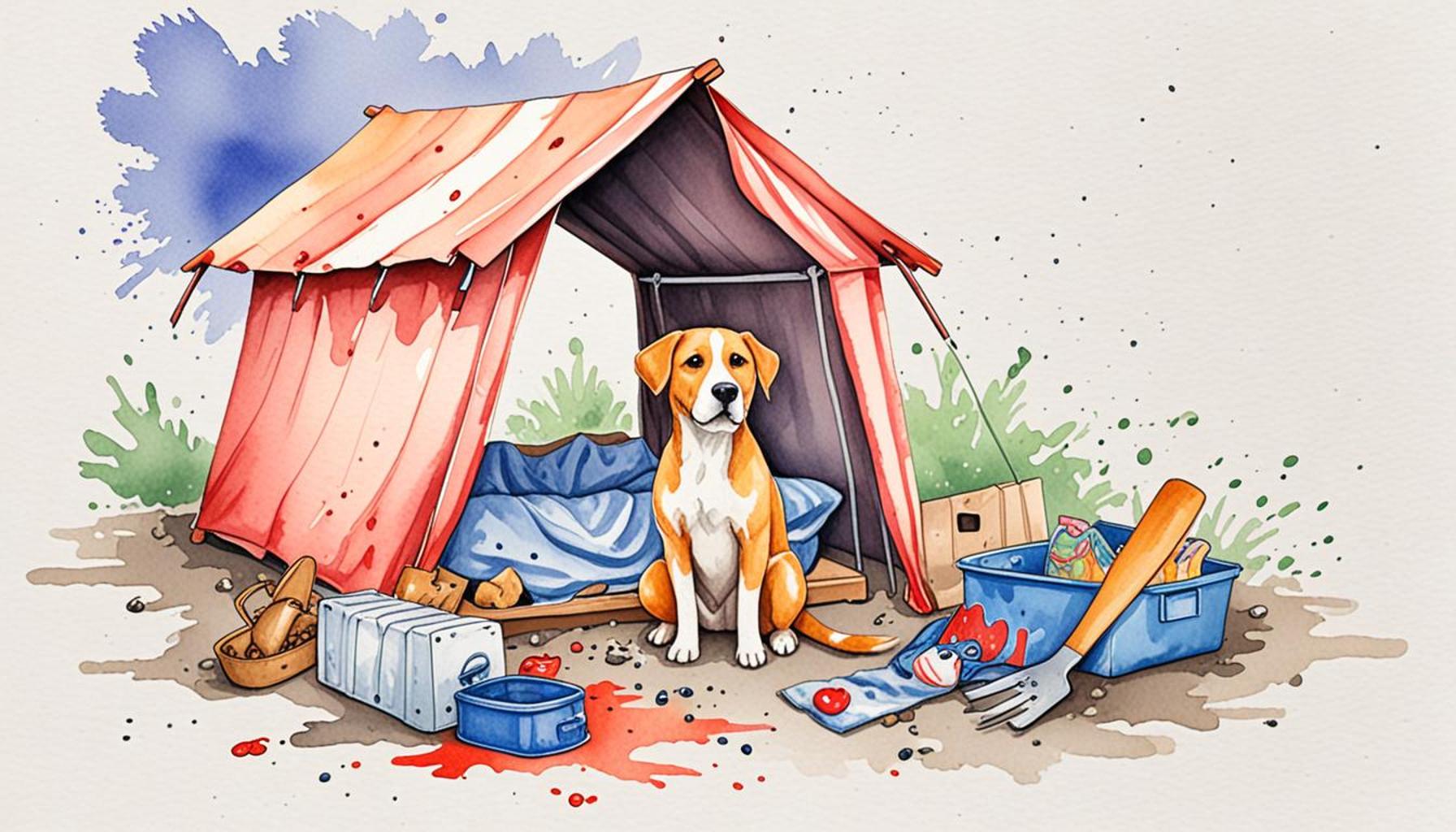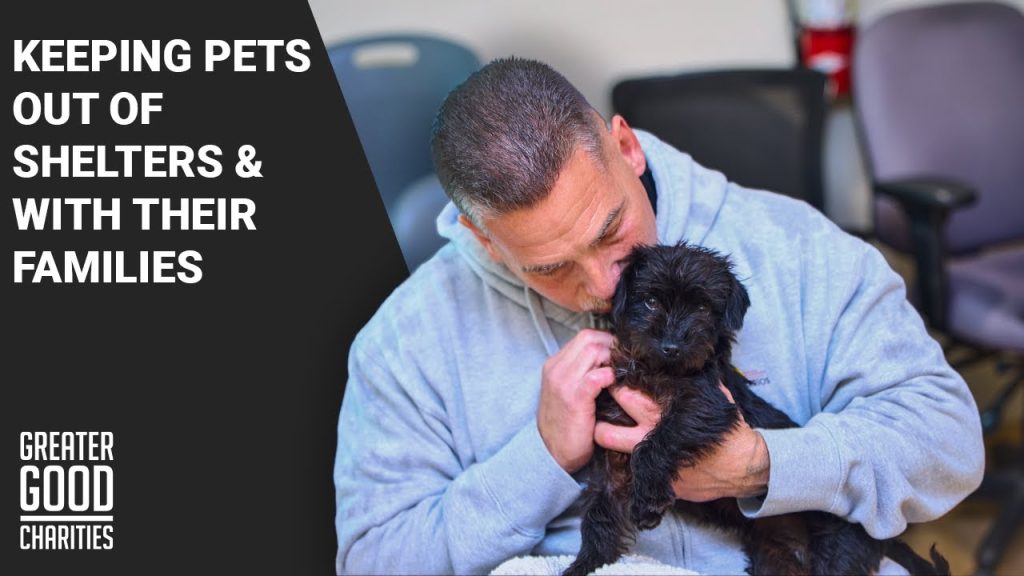Pet Adoption in Times of Crisis: The Role of Shelters During Emergencies and Disasters

The Vulnerability of Pets in Crisis Situations
In times of distress, whether stemming from natural disasters like hurricanes and wildfires or public health emergencies such as pandemics, pets often become vulnerable. When families are forced to evacuate or face economic hardships, many furry companions are left behind, resulting in an overwhelming influx of animals into shelters. This alarming reality underscores the crucial role shelters play in providing safety, care, and the possibility of new beginnings for pets during these turbulent times.
Challenges Faced by Animal Shelters
Animal shelters across the United States are on the front lines, confronting numerous challenges that arise during crises. These hurdles include:
- Increased intake of homeless pets: When disasters strike, shelters often see a spike in the number of animals needing care. In regions affected by hurricanes, for instance, it’s not uncommon for shelters to receive hundreds of pets that have been abandoned or found stray after evacuation.
- Limited resources and funding: Economic strains can severely impact shelters. Many face budget cuts and dwindling donations during tough times, further complicating their efforts to care for incoming animals.
- Need for fostering and adoption programs: With shelters reaching full capacity, it becomes imperative to develop programs aimed at fostering or adopting pets to ensure as many animals as possible can find permanent homes.
The Role of Shelters in Community Support
Beyond rescuing animals, shelters serve as critical hubs for community support during emergencies. They offer a range of essential services that can be lifelines for both animals and their owners, including:
- Emergency pet housing: Shelters provide safe spaces for pets when their owners must evacuate. This service is vital for keeping families together during tumultuous times.
- Veterinary services and vaccinations: Many shelters extend their services to include health check-ups, vaccinations, and urgent care, significantly reducing public health risks during emergencies.
- Education on responsible pet ownership and disaster preparedness: Shelters often run workshops or information sessions, educating the public on how to prepare for potential disasters, including creating emergency plans that account for their pets’ safety.
Adaptation and Resilience of Shelters
As we examine the dynamics of pet adoption in times of crisis, it is essential to recognize how shelters adapt to these challenges. The resilience displayed by these organizations may inspire individuals to contribute through donations, fostering, or volunteering during critical periods. This compassionate involvement not only aids the animals in need but also fosters stronger community bonds. By investing time and resources into local shelters, individuals can play an active role in shaping a more supportive network for both pets and their owners during and after crises.
Ultimately, the response of animal shelters to the challenges presented by emergencies highlights the indispensable role they play in not just rescuing pets, but also in unifying communities through shared compassion and dedicated action. In recognizing this role, we can better appreciate the importance of shelters and consider how we can support their work, particularly when crises arise.

LEARN MORE: Click here to find out how to manage pet allergies
The Essential Services Provided by Animal Shelters
In the face of emergencies, animal shelters become crucial lifelines for pets and their families, providing an array of services designed to mitigate stress and uncertainty. These services not only address the immediate needs of animals but also foster a sense of community and support for pet owners navigating challenging circumstances. The following are key services that shelters implement during crises:
- Safe haven for abandoned pets: As families flee from disasters, many pets are left behind. Shelters welcome these displaced animals, offering them safety and care until they can be reunified with their owners or adopted into new homes. In regions affected by recent hurricanes, for example, shelters experienced significant surges in intake, leading to innovative strategies to manage the overwhelming number of strays.
- Public education initiatives: Shelters take an active role in educating the public about emergency preparedness specifically related to pets. They provide resources detailing how to create pet evacuation kits, develop disaster plans that include their four-legged friends, and understand the signs of stress in animals during tumultuous times. These educational programs can significantly increase the likelihood of pets remaining with their families during a crisis.
- Partnerships with local organizations: During emergencies, shelters often collaborate with other community organizations, such as food banks and housing services, to ensure comprehensive support for both people and pets. These partnerships facilitate the provision of pet food, supplies, and veterinary care to families in need, reinforcing the idea that when crisis strikes, no member of the family—human or animal—should be neglected.
The Impact of Crisis on Adoption Rates
While the influx of animals into shelters during emergencies is concerning, it also presents a unique opportunity for pet adoption. Many shelters capitalize on this moment, launching initiatives to encourage prospective owners to adopt animals in need, especially after disasters. The following factors contribute to increased adoption rates during these times:
- Lower adoption fees: In response to the increased number of homeless pets, many shelters reduce or waive adoption fees, making it more accessible for families to adopt. This strategy not only helps clear the shelter but also connects loving pets with compassionate owners.
- Awareness campaigns: Shelters often ramp up their outreach efforts during crises, utilizing social media, local news outlets, and community events to highlight adoptable pets. Sharing heartwarming stories and images of animals in need helps foster emotional connections that drive adoption.
- Temporary foster programs: When shelters reach capacity, they encourage community members to foster pets on a short-term basis. This creates a vital network of support that allows shelters to care for more animals while providing fostering families the chance to develop meaningful connections with their temporary pets. These experiences often lead to permanent adoptions.
As we delve deeper into the transformative power of shelters during crises, it becomes evident that they play a multifaceted role in the lives of pets and the communities they serve. Their tireless efforts not only help pets find new homes but also strengthen community resilience by encouraging compassionate involvement in times of need. Each decision made by a shelter can significantly change the trajectory of countless lives, both human and animal, during times of distress.
| Advantage | Description |
|---|---|
| Increased Visibility | Shelters gain heightened attention during crises, making pet adoption a more prominent option for families looking to provide homes. |
| Community Support | Increased community involvement assists shelters in securing necessary resources, enhancing their capacity to care for animals in need during emergencies. |
| Emotional Healing | Pets provide comfort to individuals and families affected by disasters, helping to foster emotional recovery and stability. |
| Emergency Resources | Shelters often mobilize additional resources during crises, including food and medical assistance, to ensure the welfare of displaced pets. |
During emergencies, shelters play a crucial role not only in rescuing animals but also in fostering pet adoption. The visibility of adoption programs rises, encouraging more families to consider adding pets to their household during challenging times. This moment of heightened awareness is vital as it creates opportunities for both potential adopters and animals in need of loving homes.Moreover, community support strengthens as individuals rally to assist local shelters, ensuring that displaced pets receive the attention and care they desperately need. Aid often comes in the form of donations, volunteer time, and even fostering efforts, which are critical in times of demand.Additionally, adopting a pet during a crisis can lead to emotional healing for families, offering companionship and a sense of normalcy amid chaos. Pets have an extraordinary ability to bring joy and solace, making them invaluable to recovery processes.Lastly, shelters become hubs of emergency resources, mobilizing food, medical supplies, and other necessities to support both animals in their care and the community at large. These resources are invaluable during disasters when usual channels may be disrupted and highlight the critical function that shelters serve, reinforcing their role not merely as animal havens, but as essential community support systems.
LEARN MORE: Click here to discover how to manage pet allergies
Community Engagement: Building Bonds Through Shared Experiences
In times of crisis, the role of animal shelters extends beyond merely providing services for pets. They foster community engagement by creating a platform that encourages both residents and local businesses to get involved in supporting pet adoption and welfare initiatives. This engagement can take various forms, influencing the broader social landscape during and after emergencies:
- Volunteer opportunities: Shelters often call upon volunteers during crises to help with an increased workload. Community members are encouraged to assist in various tasks, from walking dogs to helping with intake procedures. This not only alleviates the pressure on shelter staff but also fosters a sense of community involvement, as individuals come together for a common cause—enhancing the lives of animals in need.
- Community events and fundraisers: Animal shelters frequently organize events such as charity walks, adoption drives, and pet fairs. These events not only raise funds, but also spotlight the importance of pet adoption, especially in the wake of disasters. By creating a fun, family-friendly atmosphere, shelters draw in potential adopters and inform them about the emotional and practical aspects of welcoming a pet into their homes.
- Storytelling and advocacy: Shelters harness the power of stories to connect with the community emotionally. By sharing testimonials from families who have adopted pets during emergencies, shelters illustrate the profound impact these animals have had on their lives. This narrative approach highlights the reclamation of hope and love through pet adoption, encouraging others to consider adopting as a means of providing stability during uncertain times.
The Role of Mental Health in Pet Adoption
Recent studies have revealed a strong correlation between pet ownership and improved mental health outcomes. During emergencies and disasters, the psychological toll on individuals can be significant, and animal shelters are increasingly recognizing that adopting a pet can be a therapeutic intervention. Here are some ways that shelters are leveraging this mental health aspect:
- Support networks for adopters: Many shelters are offering programs that emphasize mental wellness, particularly during crises. These programs include resources for new pet owners on how to manage the emotional challenges they may face, including the “new pet blues,” and how pets can serve as emotional support. Counseling sessions, either in-person or online, can provide valuable tools and frameworks for helping families integrate newly adopted pets into their lives effectively.
- Therapy animal programs: During times of crisis, shelters often deploy therapy animals to provide comfort to individuals affected by disasters. These programs demonstrate how animals can serve as a source of solace and support, fostering an environment that encourages potential adopters to see the positive impact that in-home pets can have on their mental well-being.
As the shelter community continues to adapt and innovate in response to crises, they remain steadfast in their commitment to not only the welfare of animals but also the emotional and physical health of their human counterparts. This interconnectedness between people and pets can be pivotal in creating resilient communities capable of navigating and recovering from disasters. By embracing the multifaceted role of shelters, society can cultivate a deeper understanding of the therapeutic benefits of pet adoption and how these relationships can transform lives amidst adversity.
DISCOVER MORE: Click here to learn about balanced nutrition for your dog
Conclusion: The Lifeline of Pet Adoption in Times of Crisis
In conclusion, the role of animal shelters during emergencies and disasters cannot be overstated. They serve as not only a refuge for animals in need, but also as a crucial support system for communities navigating the often turbulent waters of crisis. Through initiatives promoting pet adoption, shelters create pathways for new relationships that foster both emotional healing and resilience. These bonds between people and pets are more than mere companionship; they offer stability and joy amidst chaos.
As communities rally together, the collective efforts of shelters, volunteers, and advocates highlight the importance of community engagement and the shared responsibility of animal welfare. By participating in volunteering and attending shelter events, individuals contribute to a culture of compassion that extends beyond the immediate act of adoption. This engagement cultivates a network of support that strengthens community ties and enriches the lives of both pets and their owners.
Furthermore, the mental health benefits associated with pet ownership cannot be ignored. In an increasingly disconnected world, the companionship provided by pets serves as a reminder of connection and purpose. As shelters implement programs emphasizing mental wellness, they showcase the profound impact that adoption can have on emotional recovery during distressing times.
Ultimately, pet adoption during crises reflects a broader understanding of healing—one that integrates the welfare of animals with the emotional needs of people. Embracing this holistic approach enables communities to not only overcome periods of adversity but to emerge stronger, united, and more compassionate. In this light, each adoption story becomes a beacon of hope, a testament to resilience, and a call to action for others to recognize the life-changing potential of bringing a new pet into their lives.


